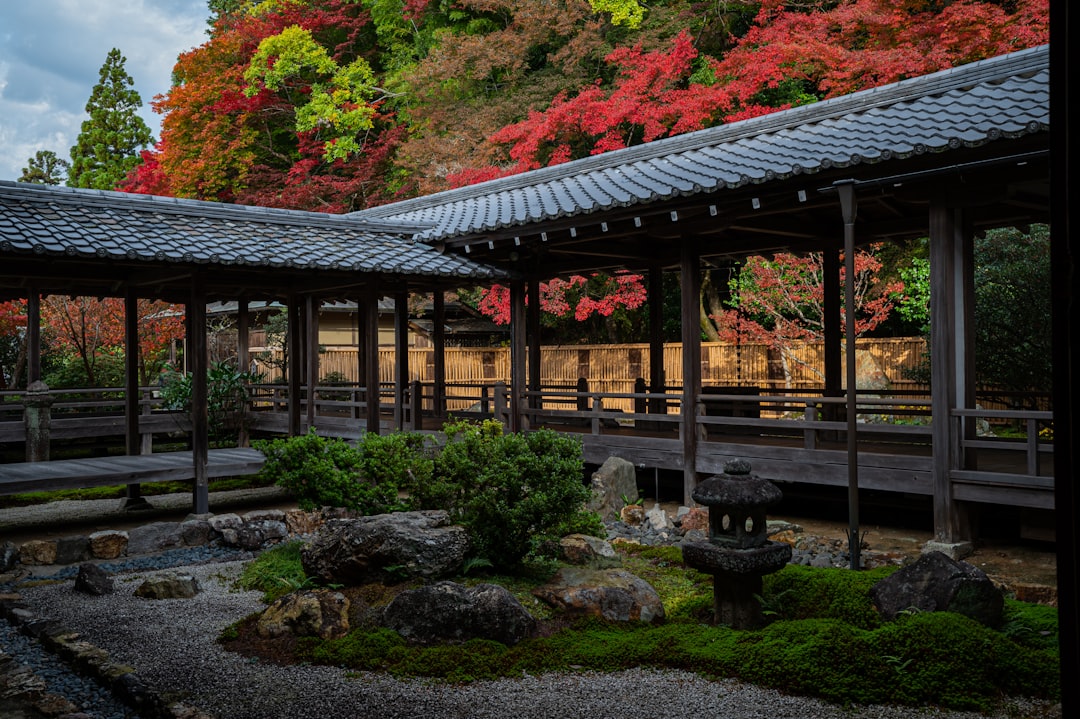Related
Unveiling Asia: Hidden Gems You Must Explore
Discover the enchanting allure of Asia beyond the usual tourist trails. "Unveiling Asia: Hidden Gems You Must Explore" guides you to the...
Popular topics
03 min reading in—Asia
Uncover the secrets of ancient Asian holistic practices and their transformative effects on modern wellness. Enhance your health and harmony with timeless traditions from the East.

In today's fast-paced world, where we're constantly bombarded by distractions and stressors, many of us are turning towards age-old practices to find balance and peace. Ancient Asian holistic practices, deeply rooted in tradition and time-tested wisdom, offer a treasure trove of techniques that can seamlessly blend with our modern lifestyles. In this blog post, we'll delve into some of these ancient practices from Asia and explore how they can enhance your wellness journey.
Traditional Chinese Medicine (TCM) is a comprehensive medical system that has been practiced for thousands of years. It emphasizes the balance of body, mind, and environment through various techniques. Here are some TCM practices that you can easily incorporate into your daily life:
Acupuncture involves the insertion of fine needles into specific points on the body to stimulate energy flow and restore balance. Research shows that acupuncture can alleviate pain, reduce stress, and improve sleep quality.
Practical Tip: Consider booking a session with a licensed acupuncturist to experience the benefits firsthand. You can also explore acupressure, a needle-free technique you can perform at home using your fingertips to target pressure points.
TCM utilizes a range of herbs to prevent and treat various ailments. Herbal formulations aim to strengthen the body's natural defense mechanisms and regulate bodily functions.
Practical Tip: Always consult with a qualified practitioner or herbalist before starting any new herbal remedy. Look for herbal teas or supplements that target specific needs, like detoxification or digestion support.
Originating from India, Ayurveda is one of the world's oldest holistic healing systems, focusing on promoting good health rather than fighting disease. It centers on the idea that balance among bodily systems is essential for well-being.
According to Ayurveda, everyone is born with a unique combination of three doshas: Vata, Pitta, and Kapha. Understanding your primary dosha can guide you towards lifestyle and dietary choices that align with your natural constitution.
Practical Tip: Take an online dosha quiz to identify your dominant dosha. Incorporate foods, exercises, and routines that support your dosha balance, such as adding warming spices for Vata types or cooling activities for Pitta types.
Dinacharya, the Ayurvedic concept of a daily routine, offers a structured approach to align your life with natural rhythms, enhancing stability and health.
Practical Tip: Start your day with a morning ritual like tongue scraping, oil pulling, or dry brushing to kickstart your metabolism and energize your body. These simple practices can take just a few minutes but have profound effects on your well-being.
Qigong, a practice with roots in China, combines movement, meditation, and breath regulation to promote the flow of "qi" (life force) throughout the body. It is often referred to as a moving meditation.
Qigong exercises are gentle and adaptable, making them accessible to people of all ages and fitness levels. Regular practice can enhance flexibility, reduce stress, and boost immune function.
Practical Tip: Start with short, guided Qigong sessions available online. Dedicating just 10-15 minutes a day can make a significant difference in your mental clarity and vitality.
Zen Buddhism, originating in Japan, offers profound insight into mindfulness and the art of living in the present moment. These practices help cultivate inner peace amidst the chaos of daily life.
Zazen is a type of meditation that involves observing your breath and thoughts without judgment. It's a core practice in Zen Buddhism aimed at achieving tranquility and self-awareness.
Practical Tip: Set up a quiet space for meditation and commit to a few minutes each day, gradually increasing your time. Focus on your breath and let thoughts come and go naturally without attaching to them.
Mindfulness extends beyond meditation into everyday activities, such as eating, walking, and even doing chores. It encourages full engagement with the present moment, fostering a deeper, more meaningful life experience.
Practical Tip: Practice mindful eating by chewing slowly, savoring the flavors, and paying attention to your body's hunger cues. This simple switch can enhance digestion and promote healthier eating habits.
The beauty of ancient Asian holistic practices lies in their simplicity and adaptability to modern life. By integrating these age-old techniques into your daily routine, you can tap into a wellspring of balance, energy, and inner peace. Whether it's through the healing touch of acupuncture, the personalized care of Ayurveda, the gentle movement of Qigong, or the serene reflection of Zen, these practices provide a path towards holistic wellness that's both time-honored and relevant. Embark on this journey and discover the transformation that these ancient wisdoms can bring to your modern world.
Related
Discover the enchanting allure of Asia beyond the usual tourist trails. "Unveiling Asia: Hidden Gems You Must Explore" guides you to the...
Related
Embark on a journey to uncover Asia's best-kept secrets with our guide to seven breathtaking hidden gems. From secluded beaches to mystical...
Related
Embark on a journey beyond the ordinary with our latest post, "Uncover Asia's Hidden Gems: 7 Must-Visit Destinations." Discover enchanting...